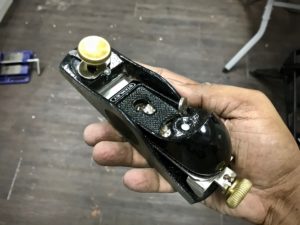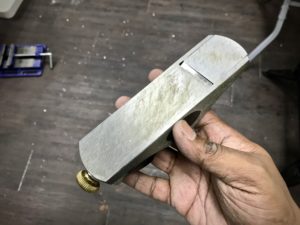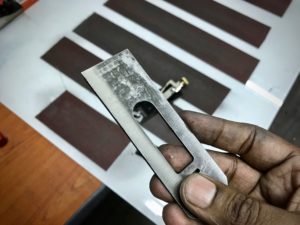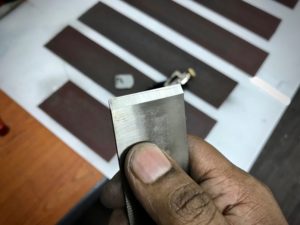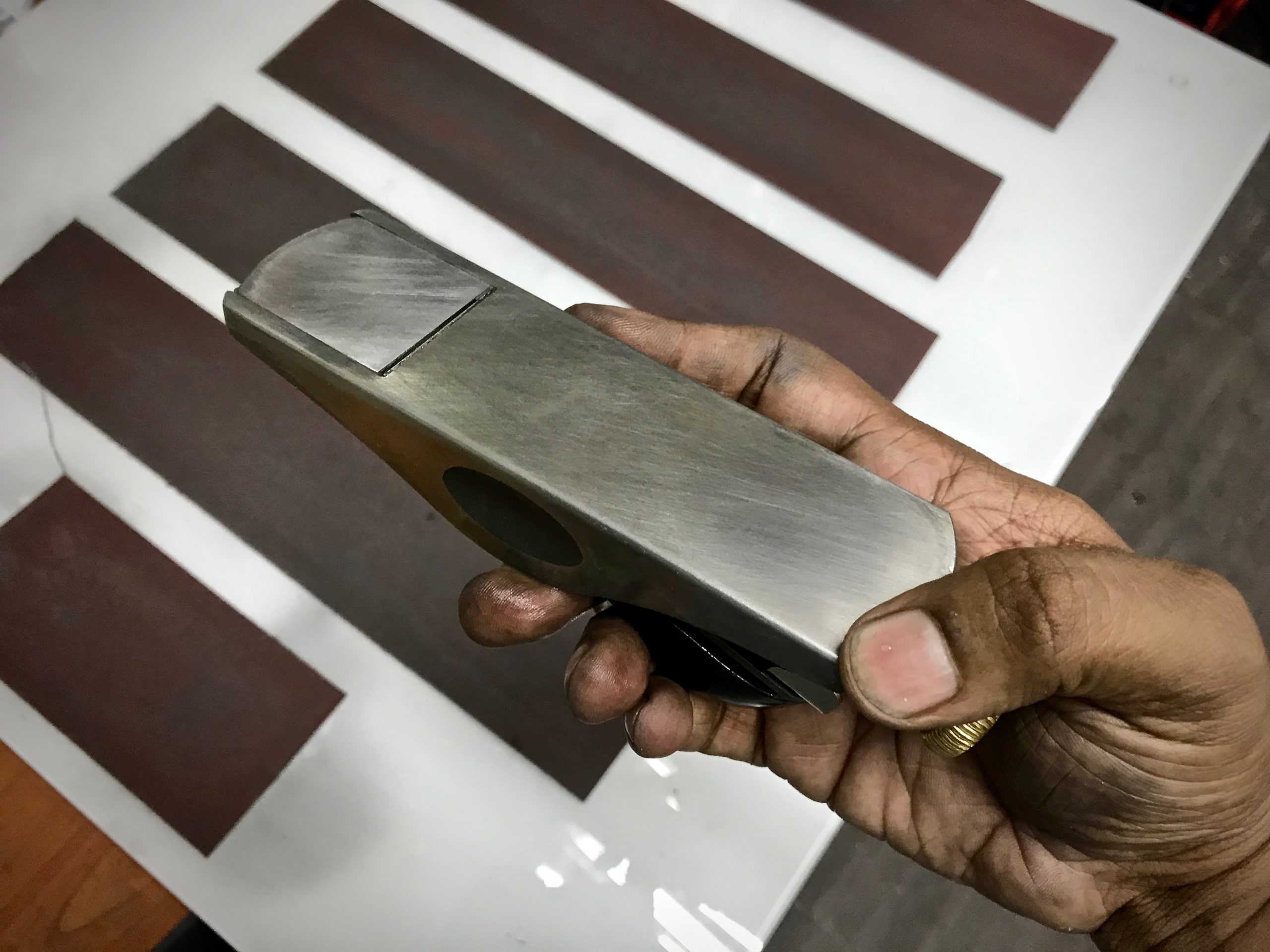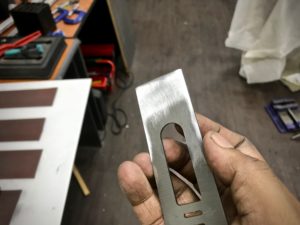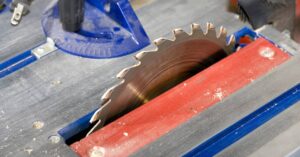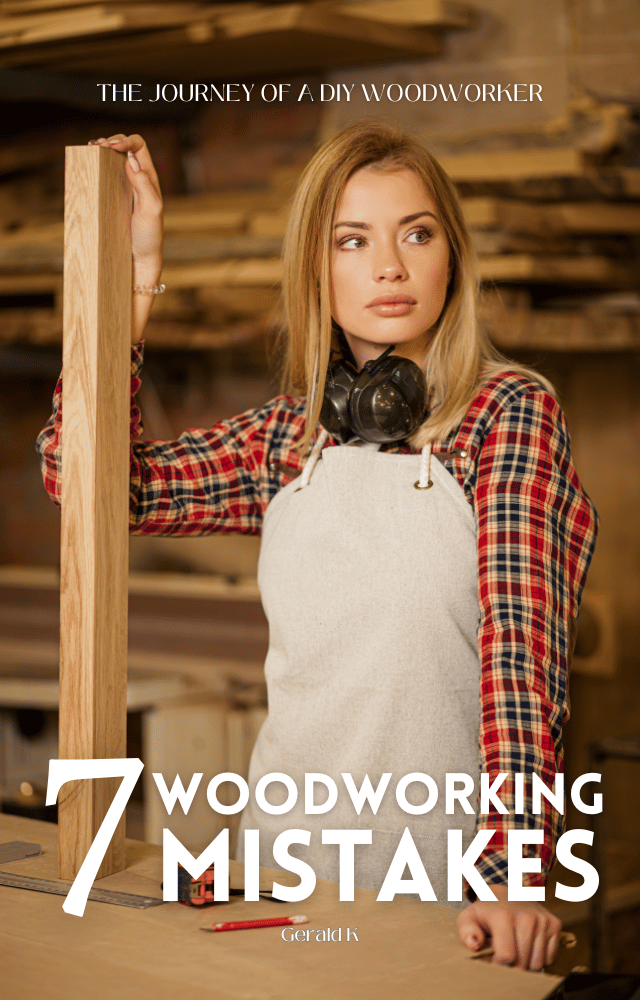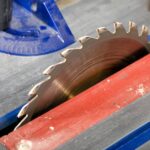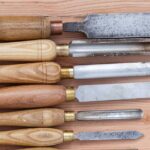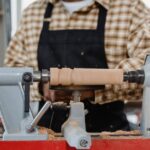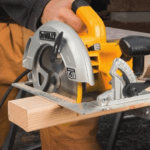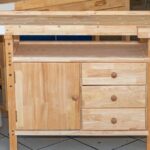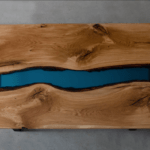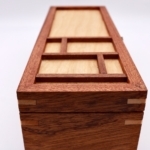The Stanley 60 1/2 block plane (Stanley No. 60) with adjustable throat is a handy tool to have for woodworking. In this article, I’ll give you a full Stanley 60 1/2 block plane review and show you a few simple steps to set up and tune it for the best results.
You can purchase the Stanley 60 1/2 at Amazon here for $43. According to the packaging, the blade is made in Sheffield, England. The rest of the plane is probably made in India, although the packaging doesn’t mention anything.
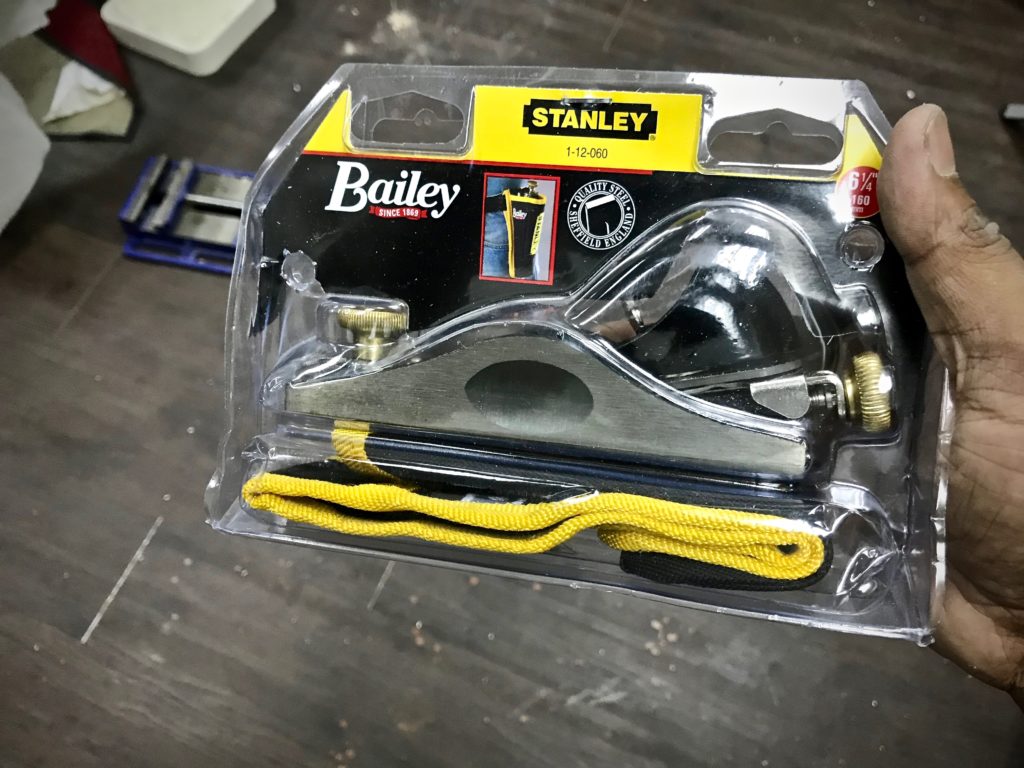
There are many variations of the block plane made by Stanley. Mine came in plastic packaging that says Stanley 1-12-060. A carrying pouch was included.
Here are the details of the Stanley 60 1/2 block plane:
- The blade is seated at 13 1/2 degrees, so some listings may refer to it as a “low-angle” block plane.
- The blade is 1. 3/8 in wide, made in Sheffield, England, and is positioned bevel-up.
- The plane measures 6 inches in length, with a cast iron body.
- It has an adjustable throat plate for controlling the mouth and a quick-release cam lock.
- The plane does not use a chip-breaker but has lateral blade adjustment. This makes it great for fine-tuning the position of your blade.
Compare to my previous unknown, cheap block plane that was off-square, this Stanley No. 6 looked promising.
Setting Up The Stanley No. 60 1/2 Hand Plane
One thing I’ve learned by watching Youtube videos about hand planes is that even the most expensive ones require a bit of setup. A cheaper plane like this No. 60 will require a fair amount of setup as well. Expect that, and you will not be disappointed.
That being said, the plane did work right out of the box. By adjusting the depth and alignment of the blade, I was able to take thin shavings off a piece of scrap pine wood easily.
The sole of the plane was in pretty decent shape, but I could see right away that it would need some truing. The blade was clean and rust-free, with a decent level of sharpness.
After about 30 minutes of sanding from 160 grit to 600 grit (you could sand to just 240 grit), I got the plane trued up and as flat as possible on all sides. This is important for accuracy, especially when you’re using the plane to square up boards.
I got the blade as sharp as I possibly could, considering that at the time I only had a 400-grit diamond stone and a leather strop. I rounded the edges a bit and flattened the reverse side of the blade.
Next, I disassembled all the knobs and parts, wiped off the access oil, applied some protective wax, and put everything back together again. No unexpected issues here; everything fits together really well.
In total, I spent about an hour from unboxing to setting up the plane.
Stanley 60 1/2 Block Plane Review
I am no expert in hand planes. I would not consider myself a professional reviewer. However, I do own a few block planes including a Stanley No. 4 and a Taytools No 6 plane.
Also, there was that stupidly inaccurate and unbranded block plane that I had set up multiple times before deciding to give up.
Based on these, I could say that the Stanley 60 1/2 block plane is pretty darn good for the price.
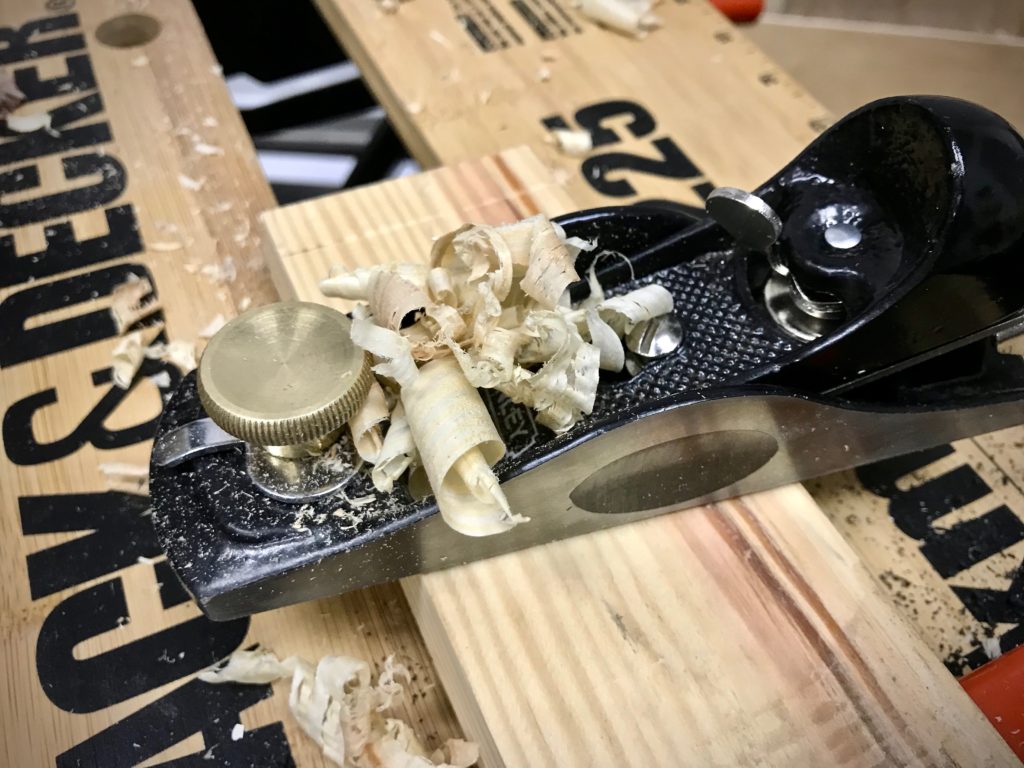
It was comfortable to use and easy to adjust. I first adjusted the blade depth, the used the lateral adjustment to get an even shaving across the width of the blade. Next, I played around with the throat opening until I found my sweet spot.
The result? A silky smooth finish on my scrap piece of Douglas fir pine. I know people don’t refer to block planes as “smoothing planes” but I was pretty impressed by the smoothing capability of this Stanley No. 60. For small pieces of wood, you can use it to square up your board as well.
When I was looking around for a block plane, I wanted something that was extremely flexible and easy to use. I wanted something that had an adjustable throat and lateral positioning.
With the Stanley 60 1/2 block plane, I found what I wanted and I am extremely happy with it. I highly recommend you get one from Amazon or anywhere else you can find great tools.

